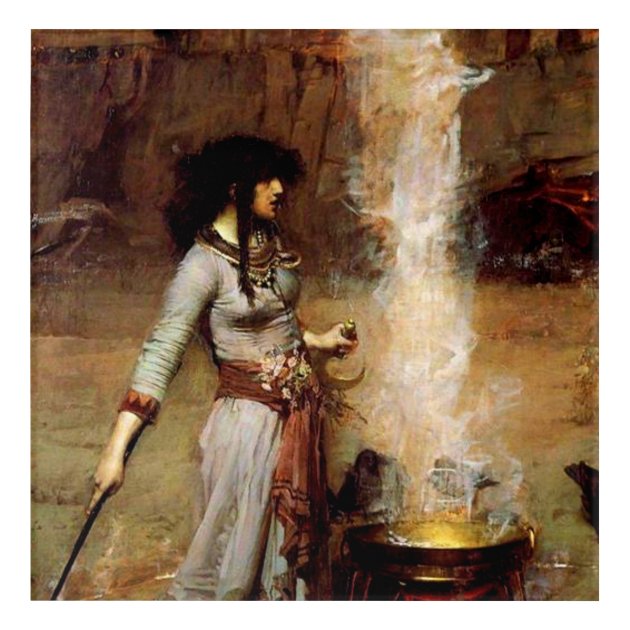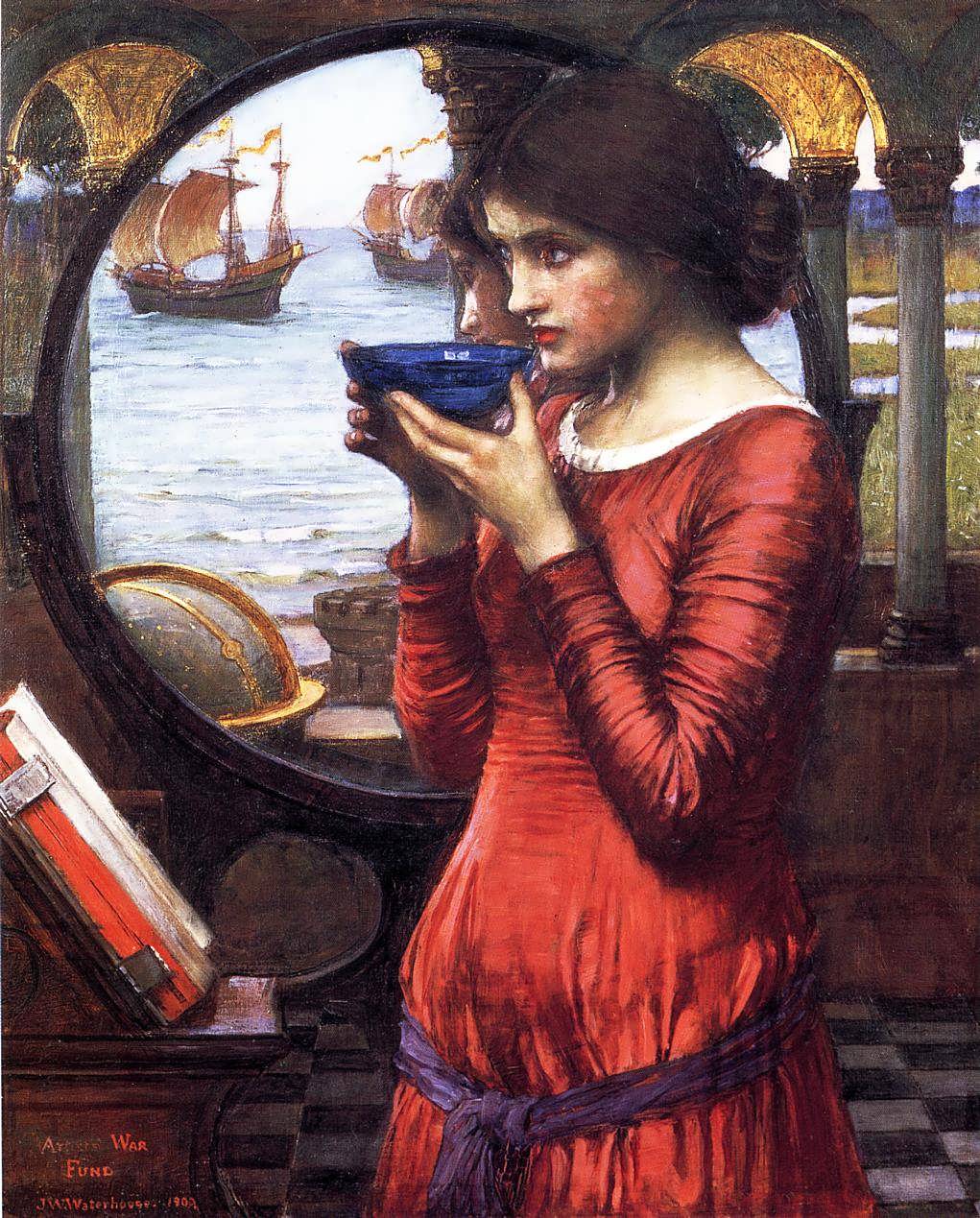

New!!: The Magic Circle (Waterhouse painting) and Lawrence Alma-Tadema Sir Lawrence Alma-Tadema, (born Lourens Alma Tadema 8 January 1836 – 25 June 1912) was a Dutch painter of special British denizenship. New!!: The Magic Circle (Waterhouse painting) and John William Waterhouse John William Waterhouse (6 April 1849 – 10 February 1917) was an English painter known for working first in the Academic style and for then embracing the Pre-Raphaelite Brotherhood's style and subject matter. New!!: The Magic Circle (Waterhouse painting) and Hecate Edwards in the American Journal of Archaeology, Vol. Hecate or Hekate (Ἑκάτη, Hekátē) is a goddess in ancient Greek religion and mythology, most often shown holding a pair of torches or a keyThe Running Maiden from Eleusis and the Early Classical Image of Hekate by Charles M.

New!!: The Magic Circle (Waterhouse painting) and Frederick Sandys

New!!: The Magic Circle (Waterhouse painting) and Francis Leggatt Chantrey Īnthony Frederick Augustus Sandys (born Antonio Frederic Augustus Sands) ( – 25 June 1904), but usually known as Frederick Sandys, was an English painter, illustrator and draughtsman, associated with the Pre-Raphaelites. Sir Francis Leg(g)att Chantrey (7 April 1781 – 25 November 1841) was an English sculptor. ġ8 relations: Francis Leggatt Chantrey, Frederick Sandys, Hecate, John William Waterhouse, Lawrence Alma-Tadema, List of paintings by John William Waterhouse, Magic circle, Magician (fantasy), Medea (Sandys painting), Morgan le Fay, Oil painting, Ouroboros, Pre-Raphaelite Brotherhood, Royal Academy of Arts, Saint Eulalia (Waterhouse painting), Tate Britain, The Daily Telegraph, Witchcraft. these days, he’d be delighted you share his interest in the occult and magical women.The Magic Circle is an oil painting in the Pre-Raphaelite style, created in 1886 by John William Waterhouse. We’re sure if you conjured up the spirit of J.W. After a vote of 7-3, the Chantrey Bequest bought the painting for £650- roughly $110,000 today! These days The Magic Circle is a favorite of modern witches who store potions in mason jars and use bullet journals for their grimoires. The Magic Circle debuted at the Exhibition of the Royal Academy in 1886 where it was met with critical acclaim for its originality and beauty. The color palette and brush techniques used in the painting were inspired by naturalist painter Jules Bastien-Lepage who was known for his sentimental depiction of rural life.
#THE MAGIC CIRCLE WATERHOUSE PAINTING FULL#
Somehow, using murky browns and greys, Waterhouse managed to create a picture full of dynamic energy. Since Waterhouse chose dull colors in this particular painting, it’s likely the witch is actually a grey/neutral witch who practices neither white nor black magic.

It’s easy to assume these creature are her familiars -animal guides who assist witches with their magic- but since they aren't allowed within the witch’s protective circle they’re probably not, which implies the witch isn’t evil. These animals are all symbols of evil heavily associated with witchcraft. Instead of a black cat, the witch is accompanied by a tiny frog and black birds, either crows or rooks (no, not like the chess piece). Back then it was common practice for spiritualists to perform seances and communicate with spirits. It looks like our witch is summoning spirits, noted through the abnormal brush patterns jutting out the column of smoke. The boline’s crescent shape associates the witch with Hecate, Greek goddess of the moon and witchcraft. Like any good witch, she’s got her tools- a wand to cast the circle and a Wiccan sickle called a boline to cut herbs. The magic circle in the ground is a protective barrier against bad hoodoo. This is one of the oldest mythical symbols, dating back to ancient Egypt, and represents the infinite cycle of life, death, and rebirth. This fashionable witch is also wearing what appears to be a snake eating its own tail, an ouroboros, around her neck.
#THE MAGIC CIRCLE WATERHOUSE PAINTING SKIN#
The woman’s skin tone and facial features suggest she’s of Middle-Eastern origin, but her hair is styled in Anglo-Saxon braids and her dress features Greek art. Waterhouse’s formal artistic training and the social environment of 19th century England exposed him to various cultures that influenced his love and portrayal of witches.Īt the time it was trendy to express interest in the exotic and the occult, both of which you can see here in The Magic Circle. He often depicted witches, goddesses, and other magical women not as fearfully evil creatures but as powerful forces to be reckoned with. Waterhouse loved to paint enchantingly beautiful women in nature via the Pre-Raphaelite style. J.W. Waterhouse had a thing for a women who could put him under a spell- literally.


 0 kommentar(er)
0 kommentar(er)
